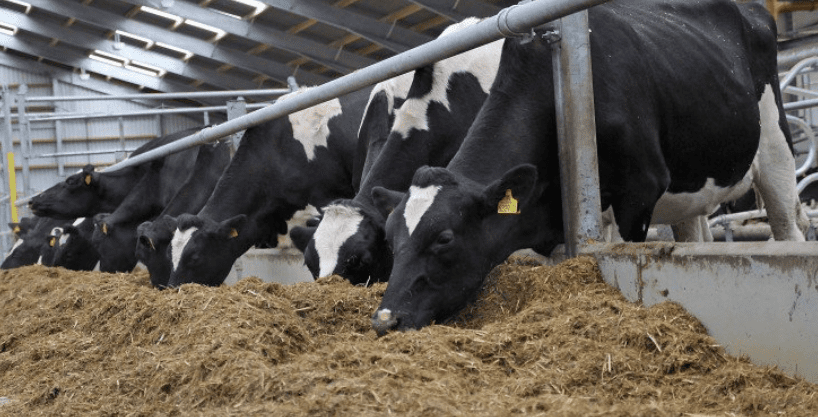With a wide range of rumen buffers and conditioners available, understanding when they’re worth using and which factors have the greatest impact on performance is essential.
“Efficient conversion of feed into milk is highly dependent on having a good rumen fermentation,” stated Dr. Derek McIlmoyle, AB Vista’s EMEA Ruminant Technical Director.
“The rumen functions best between pH 5.8–6.2, and the closer to pH 6.0 the better. But high energy density in early and mid-lactation rations often creates overly acidic conditions, especially when including large volumes of starchy concentrate.”
Impact of acidity
Although pH 5.5 is the threshold for sub-acute ruminal acidosis (SARA), fibre digestion is compromised any time the rumen drops below pH 5.8. The negative impact on feed efficiency and milk output – and milk fat production in particular – can therefore be substantial even if there are no obvious outward signs of acidosis.
“Rumen buffering and conditioning is about much more than just avoiding acidosis,” Dr. McIlmoyle added. “It’s an opportunity to improve feed efficiency, cow performance and overall margins.
So, if there’s any chance the rumen could be outside the optimal pH 5.8-6.2 range for a prolonged period of time, a slow-release conditioner like Acid Buf is definitely worth considering.
Research at University College Dublin (UCD) showed that even when no specific acidosis threat was present, feeding Acid Buf could increase milk solids production by 7% and energy-corrected milk (ECM) yield by 1.74kg/cow/day.
Assessing acidosis risk
Dr. McIlmoyle’s advice is to start by assessing the level and type of pressure the rumen is under. Use the values in Table 1 to determine a risk score for each of the six assessment categories, then compare the total against recommendations listed at the bottom of the table.
“When it comes to buffering rumen pH, slow-release conditioners like Acid Buf have largely superseded the traditional mineral-based rumen buffers, such as sodium bicarbonate, limestone flour and magnesium oxide,” he explained.
“There’s evidence that sodium bicarbonate, for example, lowers acid loading in the rumen by increasing outflow rate, leading to a reduction in feed efficiency.”
Differences in efficacy
Below are the results of a laboratory study comparing the performance of 10 rumen buffers and conditioners which highlighted the significant differences that exist.
The main results of the study are shown in Figure 1, with the bars indicating the pH at which each buffer or conditioner became active as the pH fell, and inactive as the pH rose.
“More than half of the buffers and conditioners in the study failed to become active until the pH was well below the threshold for acidosis,” Dr. McIlmoyle commented.
“And two produced results that indicate the potential to push rumen well above pH 6.2, which can be just as damaging to rumen function. Only Acid Buf – the dark green bar – produced a result within the optimum zone.”
A separate comparison between two of the leading conditioners on the market also highlighted significant differences in capacity to neutralise acid within the rumen – there was an 88% difference in acid neutralising capacity.
“These research results highlight just how important it is to ask your supplier the right questions about both the activity threshold – known as the average ionisation pH – and acid neutralising capacity before making any buying decisions,” Dr. McIlmoyle added.
“The higher efficacy of conditioners like Acid Buf means much lower dose rates (80g/cow/day versus around 250g/cow/day for sodium bicarbonate), making them highly cost-effective” he highlighted.
“Acid Buf also contains highly bioavailable minerals such as calcium and magnesium, which allows other mineral sources to be reduced for a further cost benefit.”
Further information
For more information visit: www.abvista.com; or call us on: 004428-94473478.
Or simply Click here



